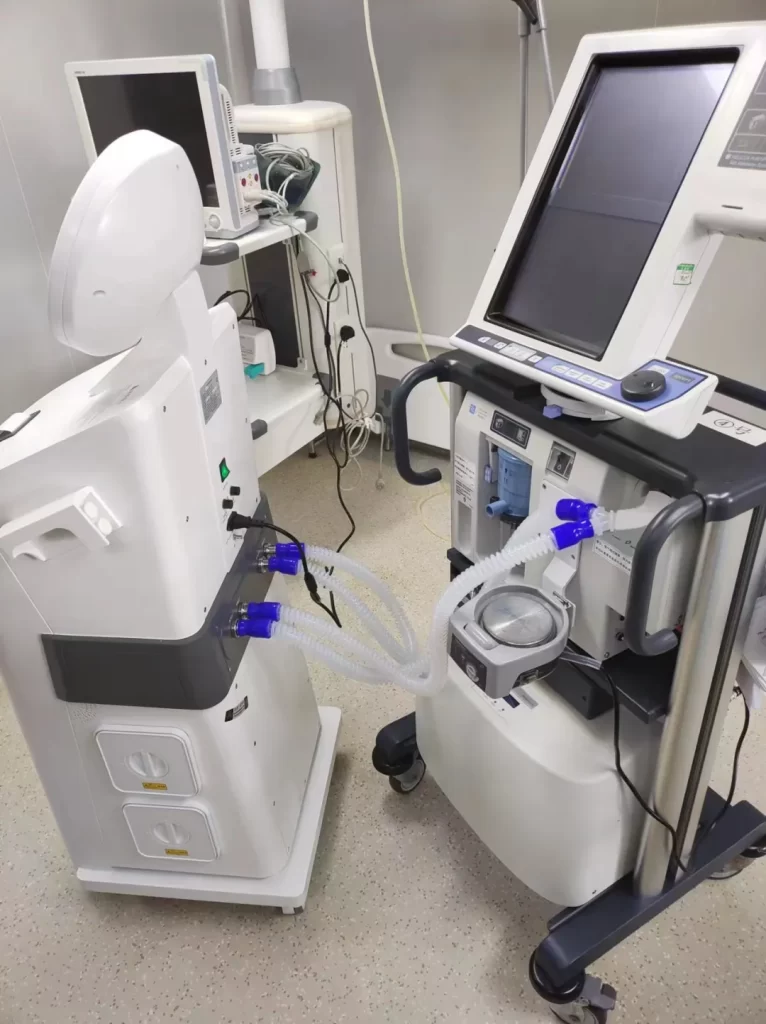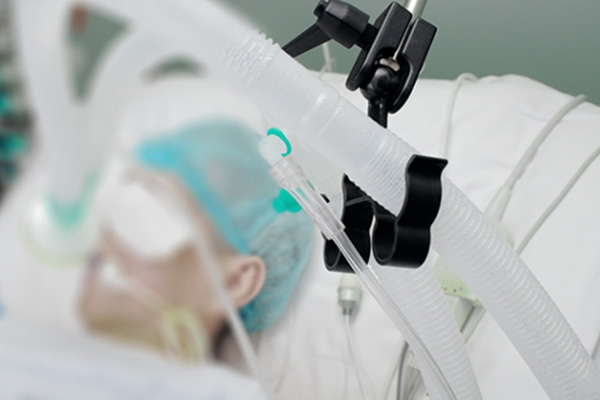In healthcare settings, ventilators are critical devices used to support patients with breathing difficulties. However, ventilator circuits can accumulate condensate, which poses a significant risk of infection if not properly managed. Condensate, the liquid that forms when humidified air cools inside the ventilator circuit, can harbor harmful microorganisms, leading to infections such as ventilator-associated pneumonia (VAP). Effective disinfection of the ventilator circuit is essential to eliminate these risks and ensure patient safety. This article explores how to manage and disinfect ventilator circuit condensate to minimize the risk of infection.
Understanding the Risks Associated with Ventilator Circuit Condensate
Condensate in ventilator circuits is a breeding ground for bacteria, viruses, and fungi. The warm, moist environment inside the circuit is ideal for microbial growth, which can then be introduced into a patient’s respiratory tract. This situation is particularly concerning in patients with compromised immune systems or those who require long-term ventilation, as they are more susceptible to infections.
Moreover, improper handling of condensate can lead to contamination of the healthcare environment, increasing the risk of cross-infection among patients and healthcare workers. Therefore, it is crucial to adopt strategies that eliminate the risk of infection from ventilator circuit condensate.
Strategies to Eliminate Infection Risk in Ventilator Circuit Condensate
1. Regular Draining of Condensate
One of the most effective ways to minimize infection risk is to regularly drain the condensate from the ventilator circuit. Accumulated condensate should be drained frequently to prevent microbial growth. It is important to use sterile techniques when handling and disposing of condensate to avoid contamination of the surrounding environment. Healthcare providers should follow strict protocols, including wearing gloves and using sterile containers for collecting and disposing of the condensate.
2. Disinfection of the Ventilator Circuit
Regular disinfection of the ventilator circuit is crucial to prevent infections. Disinfection can be achieved through several methods, including chemical disinfectants, high-level disinfection with automated systems, and sterilization with heat or gas. The choice of disinfection method depends on the type of ventilator circuit and the manufacturer’s recommendations.
- Chemical Disinfection: Chemical disinfectants, such as hydrogen peroxide, chlorine-based solutions, and quaternary ammonium compounds, are commonly used for disinfecting ventilator circuits. These chemicals effectively kill a wide range of microorganisms but must be used with caution to avoid damage to the circuit and ensure that no residues remain that could harm patients.
- Automated High-Level Disinfection Systems: Automated systems provide consistent and thorough disinfection of ventilator circuits. These systems typically use heat, chemicals, or a combination to disinfect the circuit without the need for manual handling. Automated systems are highly effective in reducing infection risk and are especially useful in high-volume healthcare settings.
- Sterilization: For circuits that are designed for reuse, sterilization may be necessary. Methods such as steam sterilization or ethylene oxide gas are effective for killing all microorganisms, including spores. However, not all ventilator circuits are designed to withstand these methods, so it is essential to consult the manufacturer’s guidelines.
3. Use of Condensate Traps
Installing condensate traps within the ventilator circuit can effectively reduce the accumulation of condensate. These traps collect and remove condensate from the circuit, preventing it from pooling and reducing the risk of infection. Regularly emptying and disinfecting condensate traps is essential to maintain their effectiveness and prevent microbial growth.
4. Implementing a Closed Suction System
A closed suction system helps maintain a closed ventilator circuit, reducing the exposure of the circuit to the external environment. This system minimizes the risk of contamination and infection by preventing the entry of pathogens during suctioning procedures. Closed suction systems are especially beneficial in patients requiring prolonged mechanical ventilation.
5. Regular Monitoring and Maintenance
Regular monitoring and maintenance of ventilator circuits are essential to ensure their proper functioning and minimize infection risks. Healthcare professionals should routinely check for any signs of wear and tear, such as cracks or leaks, which can harbor microorganisms. Replacing disposable components of the ventilator circuit as recommended by the manufacturer can further reduce the risk of infection.

Best Practices for Healthcare Providers
To effectively eliminate the risk of infection from ventilator circuit condensate, healthcare providers should adhere to best practices:
- Training and Education: Ensure that all healthcare workers are trained in the proper techniques for handling ventilator circuits and condensate. Regular training and education sessions can help maintain high standards of infection control.
- Strict Adherence to Protocols: Develop and enforce strict protocols for the disinfection and handling of ventilator circuits and condensate. This includes using appropriate personal protective equipment (PPE), following disinfection guidelines, and regularly updating protocols based on the latest evidence and guidelines.
- Continuous Monitoring: Continuously monitor infection rates and implement measures to address any identified issues. Regular audits and feedback can help identify areas for improvement and ensure compliance with infection control measures.
Conclusion
Eliminating the risk of infection in ventilator circuit condensate is crucial for patient safety in healthcare settings. By regularly draining condensate, using effective disinfection methods, employing condensate traps and closed suction systems, and adhering to strict protocols, healthcare providers can significantly reduce the risk of infection. Proper disinfection of the ventilator circuit and ongoing education for healthcare workers are essential components of a comprehensive infection control strategy, ensuring the safe and effective use of ventilators in patient care.

